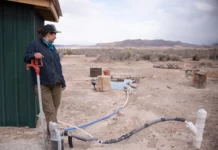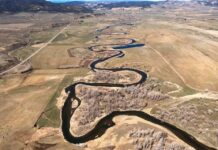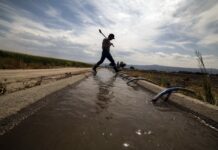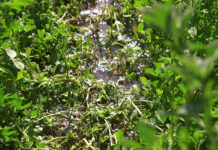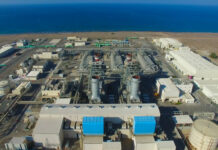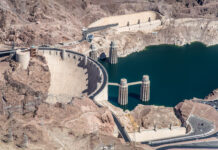Q&A: Defining the “snow deluge” and projecting its future
Scientist Adrienne Marshall explains why these extreme snow years are expected to decline in our warming world.
In Colorado, new scrutiny and possible fixes coming for drinking water in mobile home...
A new law gives the state authority to test water quality in mobile home parks and force owners to fix any issues. The testing program officially begins this summer, but state officials have gotten a head start at one community in Western Colorado that helped spur the legislation.
10 visuals that show how climate change is transforming the West’s snow and water...
The latest National Climate Assessment warns of a shrinking snowpack and serious downstream consequences.
Once ‘paradise,’ parched Colorado valley grapples with arsenic in water
Decades of climate change-driven drought, combined with the overpumping of aquifers, is making the valley desperately dry — and appears to be intensifying the levels of heavy metals in drinking water.
Upper Colorado River states add muscle as decisions loom on the shrinking river’s future
Upper basin states seek added leverage to protect their river shares amid difficult talks with California and the lower basin
Colorado River farm fallowing pilot moves forward, with approvals slated for next month
Farmers and ranchers in Colorado have submitted proposals to help restore the Colorado River, but the impacts remain uncertain.
Crop in the crosshairs
The federal government is trying to save the water supply for 40 million Americans. It has released three possible plans to protect the Colorado River Basin, which is facing...
Urban Water Conservation Success in the Colorado River Basin
In the past few decades, cities in Arizona, Colorado, and Nevada have vastly increased their water use efficiency. They’ve also learned lessons that can inform other cities’ efforts.
Long-distance water
There’s desperation in the desert – for communities that could run out of water if the Colorado River keeps shrinking from overuse and climate change. Many are now looking...
Photos: Lake Mead and Hoover Dam aerials, May 2021
This page features aerial images of Lake Mead and Hoover Dam, along the Colorado River near Las Vegas, Nevada.
Lake Mead is the nation's largest reservoir by capacity, but its...






